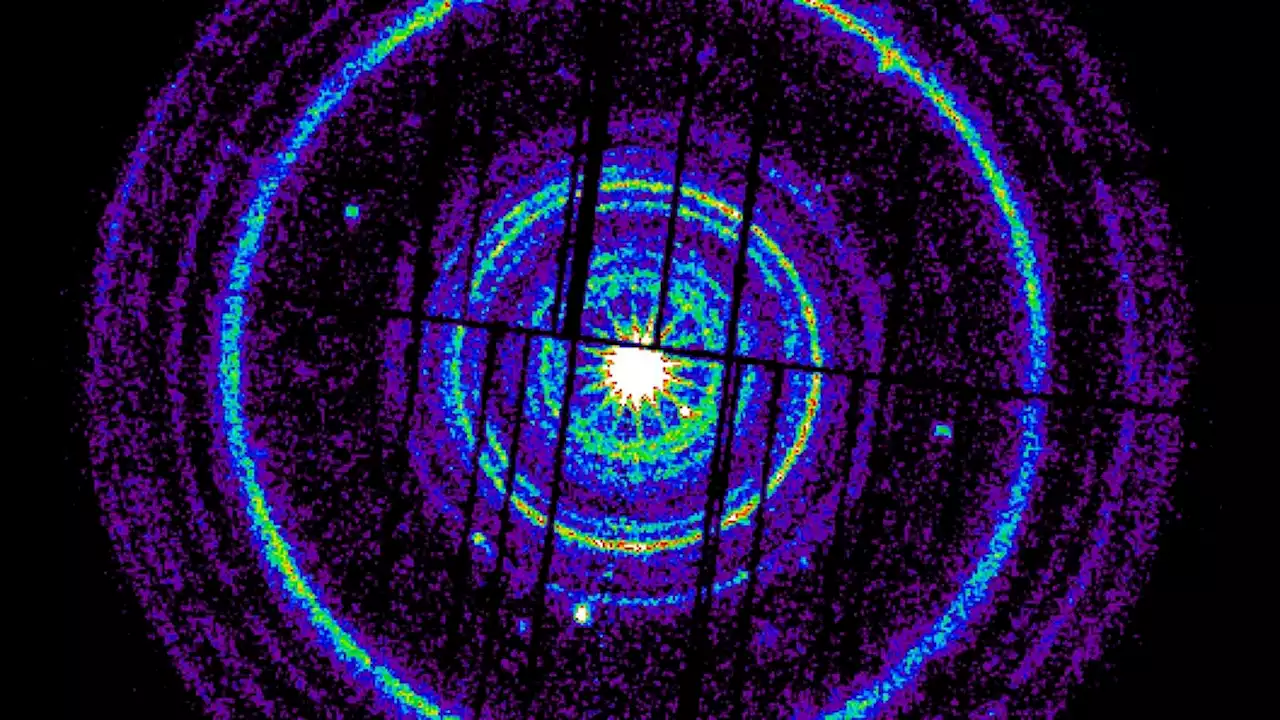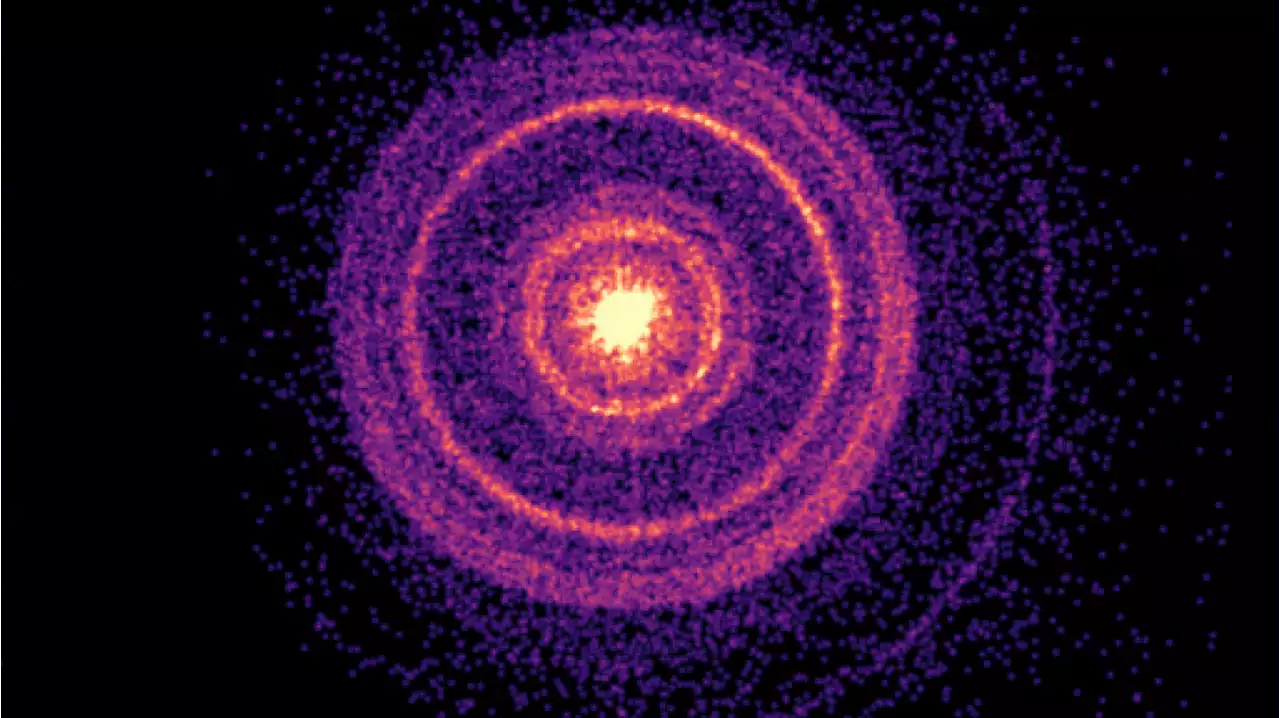The burst could be a result of the 'birth cry of a black hole'.
Soon after this detection, astronomers turned to powerful telescopes to conduct follow-up observations and determine the GRBs’ origin.
“GRB 221009A was likely the brightest burst at X-ray and gamma-ray energies to occur since human civilization began,” said Eric Burns, an assistant professor of physics and astronomy at Louisiana State University, in a Astronomers classify burst sources into two categories: short and long bursts. Short GRBs are caused by neutron stars, whereas long GRBs are caused by the birth of black holes.
Canada Latest News, Canada Headlines
Similar News:You can also read news stories similar to this one that we have collected from other news sources.
 Astronomers Stunned by Brightest Gamma Ray Burst Ever RecordedThe astounding outburst came from a galaxy 2 billion light-years away. It's the 'BOAT'—the brightest of all time.
Astronomers Stunned by Brightest Gamma Ray Burst Ever RecordedThe astounding outburst came from a galaxy 2 billion light-years away. It's the 'BOAT'—the brightest of all time.
Read more »
 Brightest gamma-ray burst ever detected defies explanationScientists are taking a closer look at the afterglow left by the brightest gamma-ray burst ever recorded, and what they see doesn't fit with any theoretical models.
Brightest gamma-ray burst ever detected defies explanationScientists are taking a closer look at the afterglow left by the brightest gamma-ray burst ever recorded, and what they see doesn't fit with any theoretical models.
Read more »
 Brightest gamma-ray burst ever observed reveals new mysteries of cosmic explosionsOn October 9, 2022, an intense pulse of gamma-ray radiation swept through our solar system, overwhelming gamma-ray detectors on numerous orbiting satellites, and sending astronomers on a chase to study the event using the most powerful telescopes in the world.
Brightest gamma-ray burst ever observed reveals new mysteries of cosmic explosionsOn October 9, 2022, an intense pulse of gamma-ray radiation swept through our solar system, overwhelming gamma-ray detectors on numerous orbiting satellites, and sending astronomers on a chase to study the event using the most powerful telescopes in the world.
Read more »
 Brightest gamma-ray burst ever seen a 1-in-10,000-years event that's 'absolutely monstrous,' scientists say'There's a reasonable chance this is the brightest gamma-ray burst to hit Earth since human civilization began.'
Brightest gamma-ray burst ever seen a 1-in-10,000-years event that's 'absolutely monstrous,' scientists say'There's a reasonable chance this is the brightest gamma-ray burst to hit Earth since human civilization began.'
Read more »
 Insight-HXMT and GECAM-C observations of the brightest-of-all-time GRB 221009AGRB 221009A is the brightest gamma-ray burst ever detected since the discovery of this kind of energetic explosions. However, an accurate measurement of the prompt emission properties of this burst is very challenging due to its exceptional brightness. With joint observations of \textit{Insight}-HXMT and GECAM-C, we made an unprecedentedly accurate measurement of the emission during the first $\sim$1800 s of GRB 221009A, including its precursor, main emission (ME, which dominates the burst in flux), flaring emission and early afterglow, in the hard X-ray to soft gamma-ray band from $\sim$ 10 keV to $\sim$ 6 MeV. Based on the GECAM-C unsaturated data of the ME, we measure a record-breaking isotropic equivalent energy ($E_{\rm iso}$) of $\bf \sim 1.5 \times 10^{55}$ erg, which is about eight times the total rest-mass energy of the Sun. The early afterglow data require a significant jet break between 650 s and 1100 s, most likely at $\sim950$ s from the afterglow starting time $T_{AG}$, which corresponds to a jet opening angle of $\sim {0.7^\circ} \ (η_γn)^{1/8}$, where $n$ is the ambient medium density in units of $\rm cm^{-3}$ and $η_γ$ is the ratio between $γ$-ray energy and afterglow kinetic energy. The beaming-corrected total $γ$-ray energy $E_γ$ is $\sim 1.15 \times10^{51} \ (η_γ n)^{1/4}$ erg, which is typical for long GRBs. These results suggest that this GRB may have a special central engine, which could launch and collimate a very narrowly beamed jet with an ordinary energy budget, leading to exceptionally luminous gamma-ray radiation per unit solid angle. Alternatively, more GRBs might have such a narrow and bright beam, which are missed by an unfavorable viewing angle or have been detected without distance measurement.
Insight-HXMT and GECAM-C observations of the brightest-of-all-time GRB 221009AGRB 221009A is the brightest gamma-ray burst ever detected since the discovery of this kind of energetic explosions. However, an accurate measurement of the prompt emission properties of this burst is very challenging due to its exceptional brightness. With joint observations of \textit{Insight}-HXMT and GECAM-C, we made an unprecedentedly accurate measurement of the emission during the first $\sim$1800 s of GRB 221009A, including its precursor, main emission (ME, which dominates the burst in flux), flaring emission and early afterglow, in the hard X-ray to soft gamma-ray band from $\sim$ 10 keV to $\sim$ 6 MeV. Based on the GECAM-C unsaturated data of the ME, we measure a record-breaking isotropic equivalent energy ($E_{\rm iso}$) of $\bf \sim 1.5 \times 10^{55}$ erg, which is about eight times the total rest-mass energy of the Sun. The early afterglow data require a significant jet break between 650 s and 1100 s, most likely at $\sim950$ s from the afterglow starting time $T_{AG}$, which corresponds to a jet opening angle of $\sim {0.7^\circ} \ (η_γn)^{1/8}$, where $n$ is the ambient medium density in units of $\rm cm^{-3}$ and $η_γ$ is the ratio between $γ$-ray energy and afterglow kinetic energy. The beaming-corrected total $γ$-ray energy $E_γ$ is $\sim 1.15 \times10^{51} \ (η_γ n)^{1/4}$ erg, which is typical for long GRBs. These results suggest that this GRB may have a special central engine, which could launch and collimate a very narrowly beamed jet with an ordinary energy budget, leading to exceptionally luminous gamma-ray radiation per unit solid angle. Alternatively, more GRBs might have such a narrow and bright beam, which are missed by an unfavorable viewing angle or have been detected without distance measurement.
Read more »
